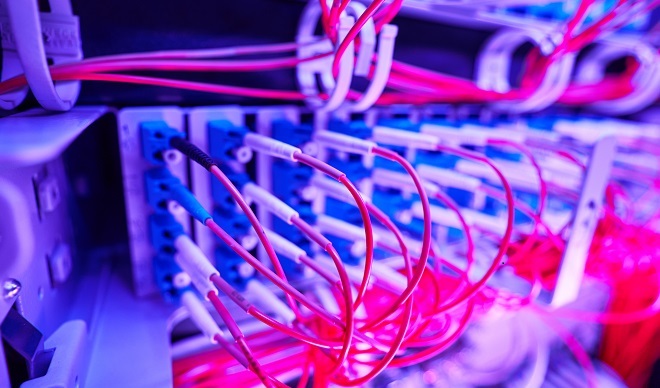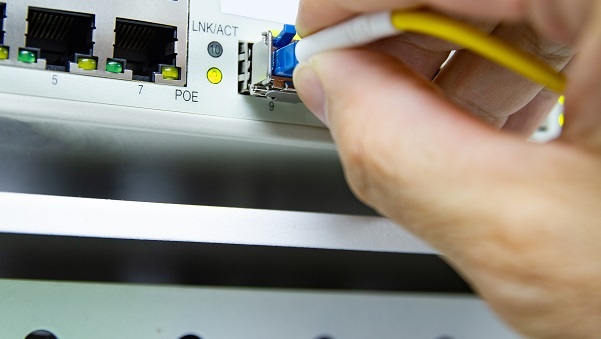
 Data Structure
Data Structure Networking
Networking RDBMS
RDBMS Operating System
Operating System Java
Java MS Excel
MS Excel iOS
iOS HTML
HTML CSS
CSS Android
Android Python
Python C Programming
C Programming C++
C++ C#
C# MongoDB
MongoDB MySQL
MySQL Javascript
Javascript PHP
PHP
- Selected Reading
- UPSC IAS Exams Notes
- Developer's Best Practices
- Questions and Answers
- Effective Resume Writing
- HR Interview Questions
- Computer Glossary
- Who is Who
What is the full form of FDDI?
Introduction
Fibre Distributed Data Interface (FDDI) is a high-speed, reliable, and secure networking technology that uses optical fibre cables to transmit data over long distances. It was developed in the 1980s as a way to provide a robust and efficient network for mission-critical applications, such as those found in government, military, and financial institutions.

FDDI uses a dual-ring topology, with one ring acting as a primary path for data transmission and the other serving as a backup in case of a failure in the primary ring. This ensures that data transmission is not disrupted even in the event of a cable break or other hardware failure.
While FDDI is no longer widely used today, it played an important role in the development of high-speed networking technologies and paved the way for the widespread adoption of fibre optic networks.
Types of FDDI
There is only one type of FDDI, which is based on the FDDI standard defined by the American National Standards Institute (ANSI). However, there are different types of equipment that can be used in an FDDI network, such as FDDI concentrators, repeaters, and network interface cards (NICs).
FDDI concentrators are used to connect multiple FDDI devices together and provide a central point of control for the network. FDDI repeaters are used to extend the distance between FDDI devices beyond the maximum allowable length of a single FDDI ring. FDDI NICs are used to connect individual devices, such as computers or servers, to the FDDI network.
In addition, there are different types of optical fibre cables that can be used in an FDDI network, such as single-mode and multimode fibre. Single-mode fibre is designed for long-distance transmission, while multimode fibre is more suitable for shorter distances. The choice of fibre cable depends on the specific requirements of the network and the distance between devices.
Advantages of FDDI
There are several advantages to using FDDI as a networking technology, including
High speed FDDI supports data transfer rates of up to 100 Mbps, which was very fast for its time, making it suitable for high-bandwidth applications such as video conferencing and multimedia streaming.
Reliability FDDI's dual-ring topology provides a high level of network reliability, as data transmission can continue even if one of the rings fails. This makes it suitable for mission-critical applications that require high network availability.
Security FDDI has built-in security features such as token passing and physical security measures that prevent unauthorised access to the network, ensuring that data is transmitted securely.
Scalability FDDI networks can be easily expanded by adding additional devices or segments to the network without affecting the performance of existing devices.
Long distance transmission FDDI is capable of transmitting data over long distances of up to 200 kilometres, making it suitable for connecting devices that are far apart.
Immunity to electromagnetic interference FDDI uses optical fibre cables, which are immune to electromagnetic interference (EMI), making it suitable for use in environments with high levels of EMI.

Overall, FDDI was a reliable and high-speed networking technology that was well-suited for mission-critical applications requiring high network availability, security, and performance. While it is no longer widely used today, its development paved the way for the widespread adoption of fibre optic networks.
Disadvantages of FDDI
While FDDI has several advantages as a networking technology, there are also some disadvantages that should be considered
Cost FDDI networks are typically more expensive to install and maintain compared to other networking technologies, such as Ethernet or Token Ring, due to the cost of the optical fibre cabling and specialised networking equipment.
Complexity FDDI networks can be more complex to set up and configure compared to other networking technologies, which can require specialised skills and knowledge.
Limited availability FDDI networking equipment and optical fibre cabling are not as widely available as other networking technologies, which can make it difficult to find replacement parts or upgrade existing equipment.
Limited compatibility FDDI is not compatible with other networking technologies, which can make it difficult to integrate with existing networks or communicate with devices that use different networking protocols.
Limited distance between devices While FDDI is capable of transmitting data over long distances of up to 200 kilometres, the distance between individual devices on an FDDI network is limited to 2 kilometres, which can be a disadvantage in large network installations.
Overall, while FDDI was a high-performance and reliable networking technology, it had some drawbacks that made it less popular than other networking technologies, such as Ethernet or Token Ring, especially as the cost of optical fibre cabling and equipment decreased over time.
FAQs
1) What is FDDI?
Ans: FDDI stands for Fibre Distributed Data Interface. It is a high-speed networking technology that was developed in the 1980s as a way to provide a reliable and efficient network for mission-critical applications, such as those found in government, military, and financial institutions.
2) What is the function of FDDI?
Ans: The function of FDDI is to provide a high-speed, reliable, and secure networking technology for mission-critical applications. FDDI achieves this through the use of optical fibre cables and a dual-ring topology, the function of FDDI is to provide a high-performance and reliable networking technology that is well-suited for mission-critical applications that require high network availability, security, and performance.
3) Why is FDDI outdated?
Ans: Overall, while FDDI was a high-performance and reliable networking technology in its time, it has become outdated due to advances in technology, limited availability, and high costs and complexity.

